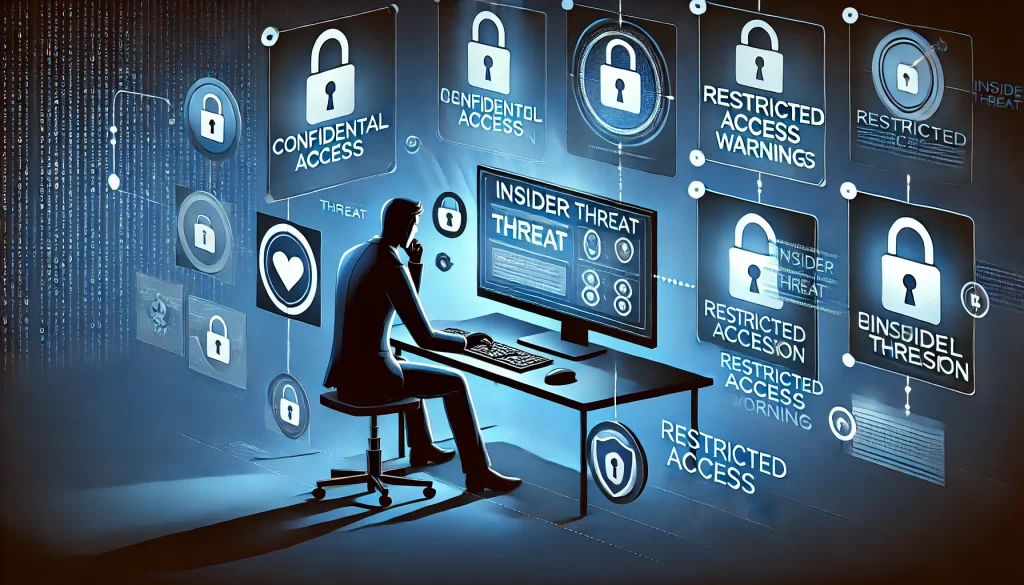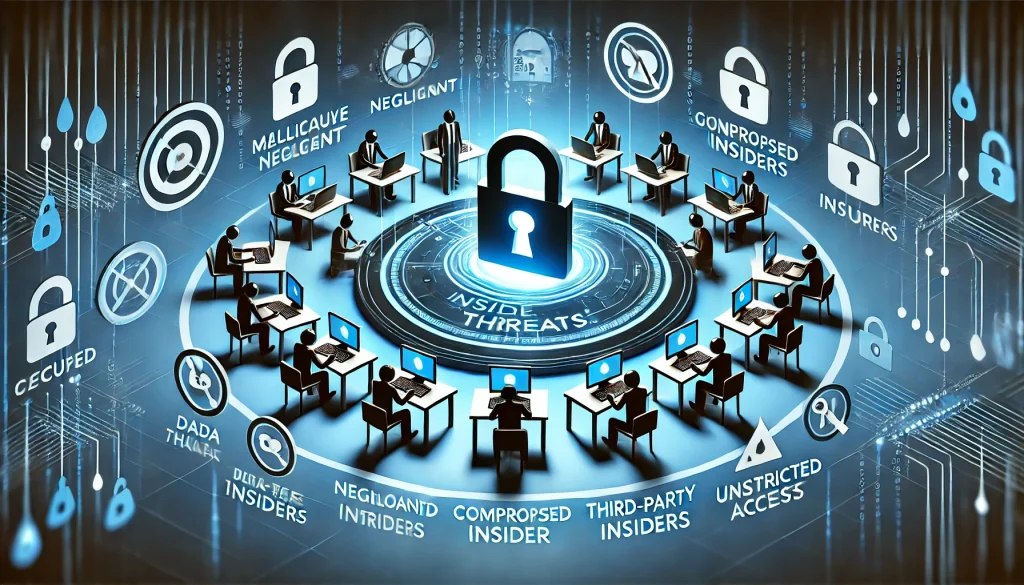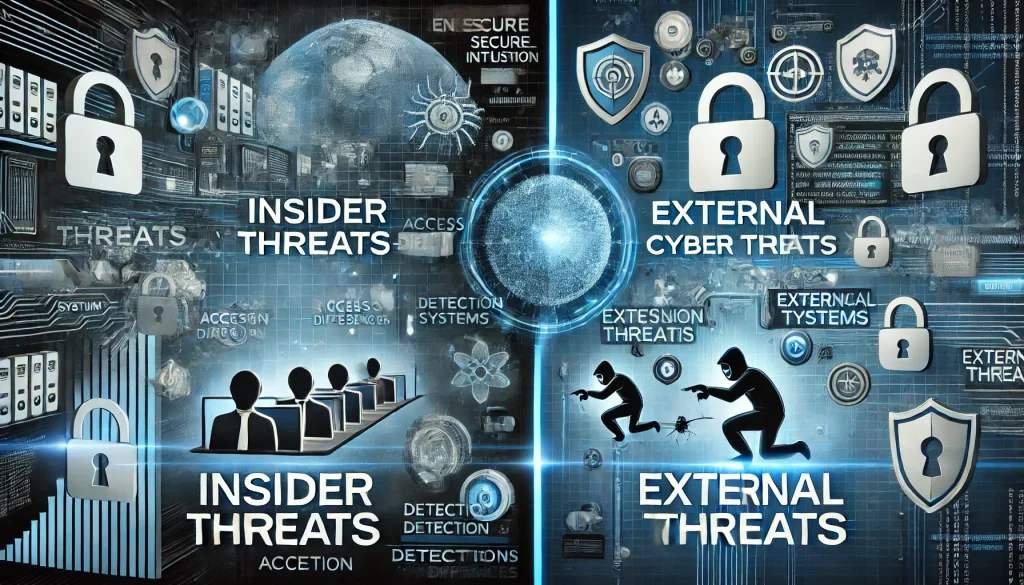
Insider threats pose a significant risk to cybersecurity, especially as companies increasingly rely on digital data and remote work environments. Employees, contractors, or even business partners with internal access can exploit their privileges, either intentionally or through negligence. As insider threats rise, understanding them becomes essential for businesses, IT teams, and decision-makers. Addressing these risks is crucial to safeguarding sensitive information, maintaining compliance, and ensuring business continuity.
Overview
Insider threats refer to security risks posed by individuals within an organization who misuse their access to data or systems. These threats can be intentional, such as sabotage or fraud, or unintentional, like an employee unknowingly exposing sensitive data. Unlike external attacks, these threats stem from individuals who already have trusted access to critical systems. In today’s cybersecurity landscape, insider threats are growing due to remote work, increased digital access, and fewer in-person security checks. Recognizing and addressing these threats is now more vital than ever.
Pros and Cons of Insider Threat Protection
| Pros | Cons |
|---|---|
| Enhances internal security measures | Can be difficult to identify insiders before a breach |
| Protects against both malicious and accidental breaches | May create mistrust among employees |
| Helps maintain compliance with data protection laws | Can be costly to implement and maintain |
In-Depth Analysis of Insider Threats
Types of Insider Threats

Malicious insiders are the most dangerous, as they act with intent to harm. These individuals may steal data for financial gain, sabotage systems out of spite, or sell information to competitors. For example, disgruntled employees or former workers who still have access can severely damage a company. Negligent insiders, on the other hand, accidentally expose data through careless behavior. This could be forwarding sensitive emails to the wrong person or falling for phishing attacks. Meanwhile, collaborators work with external attackers by providing internal access or data, making it even harder to detect.
Detection and Prevention
Detecting an insider threat is complex because these individuals often have legitimate access to systems. Behavioral monitoring can help by tracking unusual actions, such as a sudden interest in confidential files or accessing systems at odd hours. Access control plays a significant role by limiting who can access sensitive data, ensuring that only authorized personnel have access to critical systems. Data loss prevention (DLP) tools monitor the movement of sensitive information and can automatically block unauthorized attempts to move or share it. Artificial Intelligence (AI) is increasingly used to detect anomalies in behavior patterns, helping businesses spot potential threats faster.
Human Factor
Training employees on cybersecurity best practices is essential for mitigating insider threats. Organizations need to educate their workforce about phishing attacks, the importance of secure passwords, and responsible data handling. A company’s culture also plays a role in reducing the risk. By promoting transparency, accountability, and trust, businesses can create an environment where employees feel responsible for protecting data. However, companies must balance this with the need to monitor employees’ activities, as too much surveillance can erode trust and create resentment, potentially leading to more malicious actions.
Comparison with External Threats

Insider threats differ from external threats in several keyways. While external threats often involve hacking, phishing, or brute-force attacks to breach systems, insider threats involve individuals who already have trusted access. This makes insider threats harder to detect, as no traditional external defenses like firewalls or antivirus software will catch them. Companies tend to allocate more resources to combat external threats, often overlooking the risks posed by insiders. However, these threats can cause just as much, if not more, damage than external attacks, as insiders have access to sensitive information from the start.
Companies Addressing Insider Threats
Proofpoint
Proofpoint offers comprehensive insider threat management solutions. Their tools monitor for abnormal behavior and unauthorized data movement within organizations. Using advanced machine learning, Proofpoint helps detect these threats early by analyzing user activity and identifying high-risk employees. The platform focuses on mitigating both malicious insiders and accidental leaks, making it an effective solution for companies seeking robust internal security measures.
Forcepoint
Forcepoint is a leader in data loss prevention (DLP), with strong focus on insider threat mitigation. Their behavioral analytics system monitors user actions to detect potential security breaches. Forcepoint’s solution is designed to track and prevent both malicious and negligent insider behavior, offering real-time visibility into how users interact with sensitive data. This allows organizations to reduce risks without hindering productivity.
CyberArk
CyberArk specializes in privileged access management, ensuring that only authorized personnel can access sensitive information. The company’s tools are designed to manage and secure privileged accounts, which are often targeted by these threats. By limiting access and requiring additional authentication, CyberArk helps organizations protect critical systems from being exploited by insiders or malicious actors.
Splunk
Splunk offers security information and event management (SIEM) capabilities that help businesses detect insider threats through data analysis. By monitoring activity logs and identifying unusual patterns, Splunk provides early warnings of potential insider attacks. Their platform is highly scalable, making it suitable for businesses of all sizes to track and prevent these threats effectively. Splunk’s real-time analytics give companies the ability to respond quickly to security risks.
Varonis
Varonis focuses on data governance and security analytics to detect insider threats. Their system tracks how employees access, move, and share data within an organization. Varonis uses behavioral analysis to spot anomalies, such as unauthorized access to sensitive files, helping organizations identify these threats before they escalate. The platform provides detailed visibility into user activity, enabling quick and informed responses to potential threats.
Conclusion
Addressing insider threats should be a top priority for organizations as part of their overall cybersecurity strategy. With the rise of remote work and the increasing reliance on digital systems, these threats have become more frequent and more dangerous. Businesses must implement robust detection tools, foster a culture of security awareness, and invest in behavioral monitoring to mitigate these risks. Employee training, access control, and continuous monitoring are essential to reducing the likelihood of insider threats and protecting company assets.
Rating: 4.5/5
Insider threat protection is effective in many areas but can be difficult to fully implement. The balance between maintaining security and fostering a trusting work environment is delicate, and while current tools are helpful, there is always room for improvement, particularly in detection methods.
FAQ
What are insider threats in cybersecurity?
Insider threats refer to risks posed by individuals within an organization, such as employees or contractors, who misuse their access to data or systems.
How can companies prevent insider threats?
Companies can prevent insider threats by using behavioral monitoring, limiting data access through controls, and providing regular employee training on security best practices.
Are insider threats more dangerous than external threats?
Insider threats can be more difficult to detect because they involve trusted individuals, and they may cause as much or more damage than external threats due to access to sensitive data.
Resources
- UpGuard. How to Detect and Prevent Insider Threats
- TechTarget. Five Common Insider Threats and How to Mitigate Them
- ResearchGate. Techniques and Countermeasures for Preventing Insider Threats
- ISC2. Insider Threats and Prevention Strategies
- Proofpoint. Insider Threat Mitigation: 5 Best Practices to Reduce Risk
